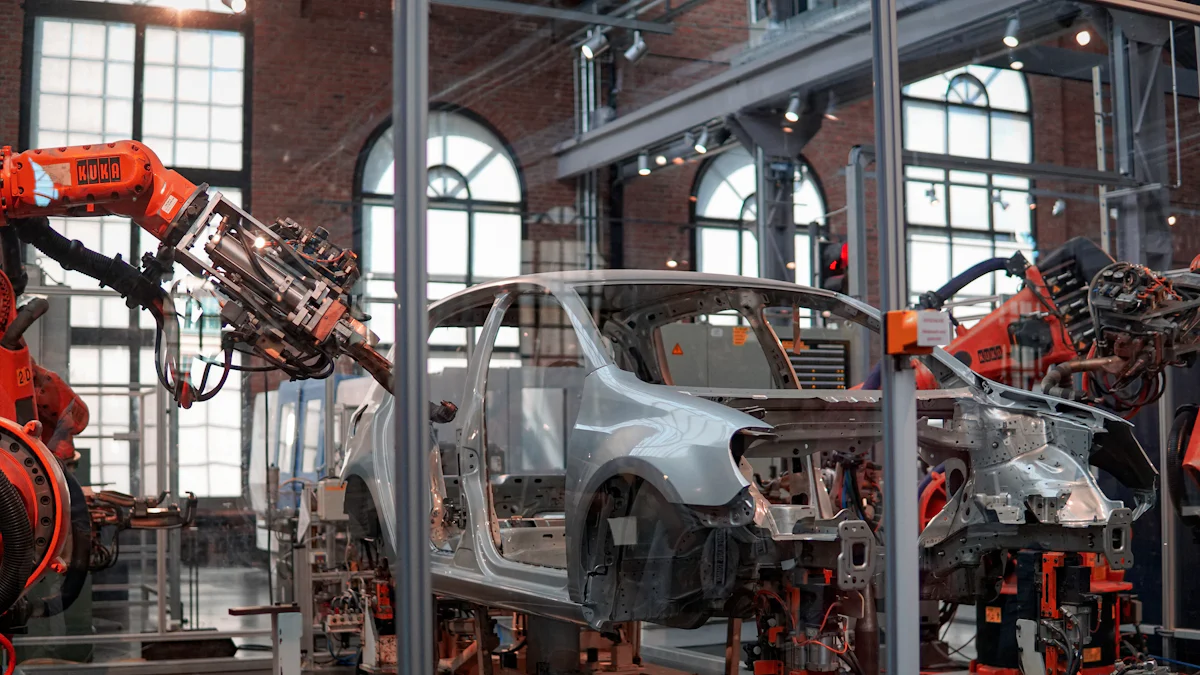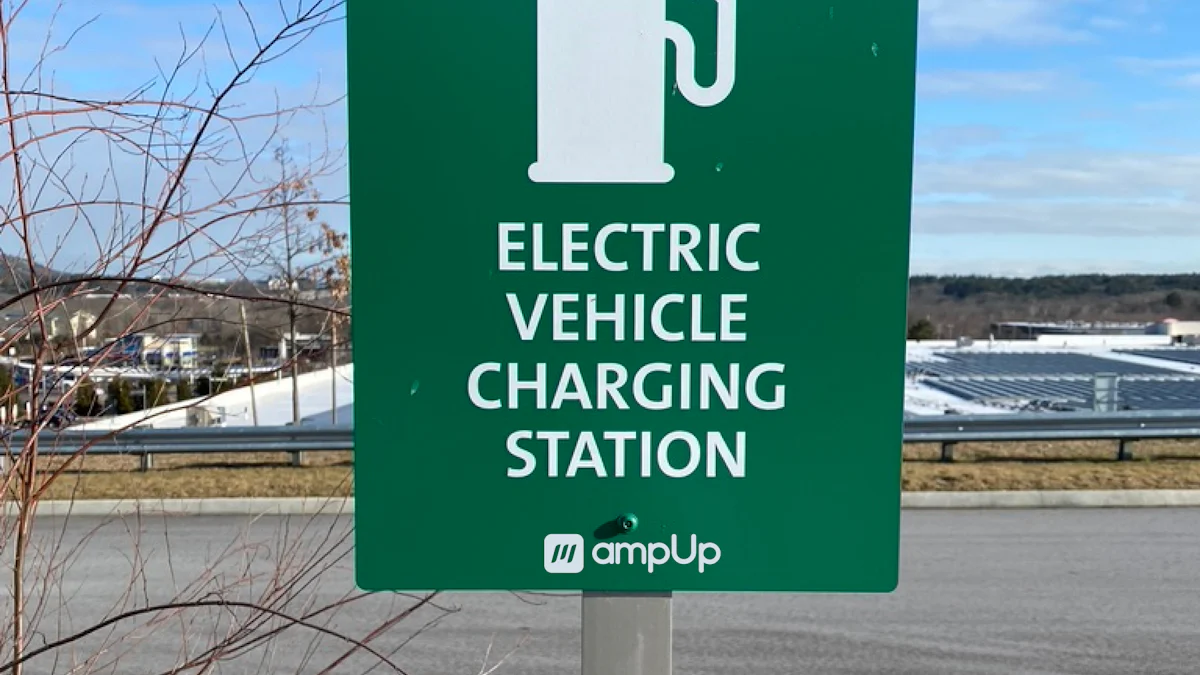In-Depth Analysis of the Current Automotive Industry Trends

Understanding current trends in the automotive industry holds immense importance. The sector experiences rapid evolution and technological advancements. For instance, searches for "autonomous driving" have surged by 1,029% over the past decade. Similarly, interest in "electric vehicles" has increased by 110% in the last five years. Staying updated with industry trends benefits both businesses and consumers. The global automotive market size was USD 2.7 trillion in 2021 and is projected to reach USD 3.5 trillion by 2031, growing at a CAGR of 3.01%. An in-depth analysis reveals the dynamic nature of this industry.
In-Depth Analysis of Technological Advancements

In-Depth Analysis of Electric Vehicles (EVs)
Growth in EV Market
The electric vehicle (EV) market has experienced significant growth in recent years. The demand for EVs continues to rise as these vehicles operate on electricity. Unlike traditional cars, EVs use electric motors instead of internal combustion engines. These motors require a continuous energy supply from batteries. The global EV market size reached $163.01 billion in 2020. Projections indicate that it will grow at a compound annual growth rate (CAGR) of 18.2% from 2021 to 2028.
Major Players and Innovations
Several major players dominate the EV market. Companies like Tesla, Nissan, and General Motors lead the industry with innovative technologies. Tesla's advancements in battery technology and autonomous driving capabilities set new standards. Nissan focuses on affordability and accessibility with models like the Nissan Leaf. General Motors invests heavily in research and development to enhance EV performance and range. Innovations such as fast-charging infrastructure and improved battery efficiency drive the market forward.
In-Depth Analysis of Autonomous Driving
Levels of Autonomy
Autonomous driving technology categorizes into different levels of autonomy. The Society of Automotive Engineers (SAE) defines these levels from 0 to 5. Level 0 represents no automation, where the driver controls all aspects of driving. Level 1 includes driver assistance features like adaptive cruise control. Level 2 offers partial automation with systems like Tesla's Autopilot. Levels 3 to 5 represent higher degrees of automation, with Level 5 being fully autonomous without human intervention.
Current State and Future Prospects
The current state of autonomous driving technology shows promising advancements. Companies like Waymo, Uber, and Tesla invest heavily in research and development. Waymo tests fully autonomous vehicles in select cities. Uber explores autonomous ride-sharing services. Tesla integrates advanced driver-assistance systems (ADAS) in its vehicles. Future prospects include widespread adoption of autonomous vehicles, enhanced safety features, and reduced traffic congestion.
In-Depth Analysis of Connectivity and IoT
Connected Car Technologies
Connected car technologies integrate Internet of Things (IoT) capabilities into vehicles. These technologies enable real-time communication between vehicles, infrastructure, and other devices. Features include navigation assistance, remote diagnostics, and over-the-air software updates. The global connected car market size was valued at $63.03 billion in 2019. Projections indicate that it will reach $225.16 billion by 2028, growing at a CAGR of 17.1%.
Impact on User Experience
Connected car technologies significantly enhance user experience. Real-time traffic updates and navigation assistance improve travel efficiency. Remote diagnostics allow for timely maintenance and repairs. Over-the-air software updates ensure that vehicles remain up-to-date with the latest features and security patches. The integration of IoT in vehicles also enables personalized settings and seamless connectivity with smart devices, enhancing overall convenience and satisfaction for users.
In-Depth Analysis of Market Dynamics
Consumer Preferences
Shift Towards Sustainable Options
Consumers increasingly prefer sustainable options. Electric vehicles (EVs) and hybrid models attract significant attention. The automotive industry responds by expanding green vehicle offerings. An in-depth analysis reveals a growing demand for eco-friendly alternatives. Consumers prioritize lower emissions and reduced fuel consumption. This shift drives manufacturers to innovate in battery technology and energy efficiency.
Demand for Advanced Features
Modern consumers seek advanced features in vehicles. Enhanced safety systems and connectivity options top the list. An in-depth analysis shows a preference for driver-assistance technologies. Features like adaptive cruise control and lane-keeping assist gain popularity. Infotainment systems with seamless smartphone integration also appeal to buyers. Automakers invest heavily in research and development to meet these demands.
Economic Factors
Impact of Global Economy
The global economy significantly impacts the automotive industry. Economic fluctuations influence consumer purchasing power. An in-depth analysis highlights the correlation between economic health and vehicle sales. During economic downturns, consumers delay new car purchases. Conversely, economic growth boosts demand for new vehicles. Exchange rates and international trade policies also affect the industry.
Influence of Government Policies
Government policies play a crucial role in shaping the automotive market. Regulations on emissions and fuel efficiency drive innovation. An in-depth analysis underscores the importance of compliance with these standards. Incentives for electric and hybrid vehicles encourage adoption. Tax breaks and subsidies make green vehicles more accessible. Policymakers aim to reduce environmental impact and promote sustainability.
Competitive Landscape
Key Players and Market Share
The competitive landscape features several key players. Companies like Toyota, Volkswagen, and Ford dominate the market. An in-depth analysis reveals their strategies for maintaining market share. These automakers invest in new technologies and expand their product lines. Strategic partnerships and acquisitions also strengthen their positions. Market leaders continuously adapt to changing consumer preferences.
Emerging Startups
Emerging startups bring fresh perspectives to the automotive industry. Companies like Rivian and Lucid Motors focus on electric vehicles. An in-depth analysis highlights their innovative approaches. Startups often introduce cutting-edge technologies and unique designs. These new entrants challenge established players and drive competition. The rise of startups fosters a dynamic and evolving market landscape.
In-Depth Analysis of Environmental and Regulatory Trends

Emission Regulations
Stricter Standards and Compliance
The US Environmental Protection Agency (EPA) finalized new vehicle emission standards on March 20, 2024. The new regulations set stringent limits for carbon dioxide, hydrocarbons, nitrogen oxides, and particulate matter emissions. These standards apply to new passenger cars, light trucks, and large pickups and vans. The regulations require manufacturers to achieve progressively lower emissions from model years 2027 through 2032. The EPA's performance-based standards allow automakers to use a mix of technologies to meet the limits.
Impact on Manufacturers
The new emission regulations significantly impact vehicle manufacturers. Automakers must invest in research and development to comply with the stricter standards. Companies need to innovate in areas such as engine efficiency, alternative fuels, and emission control technologies. Compliance with these regulations may increase production costs. However, the benefits include reduced environmental impact and improved public health.
Sustainability Initiatives
Green Manufacturing Practices
Automotive manufacturers increasingly adopt green manufacturing practices. Companies focus on reducing waste, conserving energy, and minimizing emissions during production. Many automakers implement recycling programs for materials like metals and plastics. Renewable energy sources, such as solar and wind power, are used to power manufacturing facilities. These practices contribute to a more sustainable automotive industry.
Corporate Social Responsibility (CSR)
Corporate Social Responsibility (CSR) plays a crucial role in the automotive industry. Companies engage in CSR initiatives to address environmental and social issues. Automakers invest in community projects, support education, and promote environmental conservation. CSR efforts enhance the company's reputation and foster customer loyalty. The automotive industry's commitment to CSR reflects its dedication to sustainability and social responsibility.
In-Depth Analysis of Future Outlook
Predicted Trends
Technological Innovations
The automotive industry anticipates several technological innovations. Electric vehicles (EVs) and Internet of Things (IoT) connectivity will dominate the market. AI integration in manufacturing processes will enhance efficiency. Autonomous driving technology will advance further, with higher levels of autonomy becoming mainstream. The shift towards eco-friendly energy sources will continue to grow. On-demand services and ethical rules for autonomous vehicles will shape future trends.
Market Projections
Market projections indicate robust growth for the automotive sector. The global automotive market size will increase significantly. The demand for electric vehicles will rise, driven by performance-based standards and market developments. The compound annual growth rate (CAGR) will reflect this upward trend. The market will see a substantial increase in plug-in electric vehicles by 2032. Advanced technologies will drive market expansion.
Challenges and Opportunities
Potential Obstacles
The automotive industry will face several potential obstacles. Compliance with stringent emission regulations will pose challenges. Manufacturers will need to invest heavily in research and development. Economic fluctuations will impact consumer purchasing power. Supply chain disruptions will affect production schedules. The industry will need to navigate these hurdles to sustain growth.
Areas for Growth
Despite challenges, the automotive industry will find areas for growth. Green manufacturing practices will offer opportunities for innovation. The adoption of advanced driver-assistance systems (ADAS) will enhance vehicle safety. The rise of connected car technologies will improve user experience. Emerging startups will introduce cutting-edge technologies. Strategic partnerships and acquisitions will strengthen market positions.
Staying informed about industry trends holds immense importance. The automotive sector undergoes continuous evolution, driven by technological advancements and shifting consumer preferences. Large automakers like Tesla, Alphabet, Ford, GM, and Volvo have all entered the autonomous vehicle space, reflecting this dynamic change.
Searches for “connected car” have risen by 96% over the last decade.
The rising popularity of autonomous vehicles will propel market growth. Project IONIQ Lab predicts 12 'megatrends' to shape the future of the car industry by 2030. Keeping an eye on future developments will offer valuable insights and opportunities.
See Also
Unlocking Your Automotive Supply Chain's Full Potential
Transforming Data into Strategic Decisions for Automotive Forecasting
Mastering Automotive Supply Chain Challenges with Expert Advice
